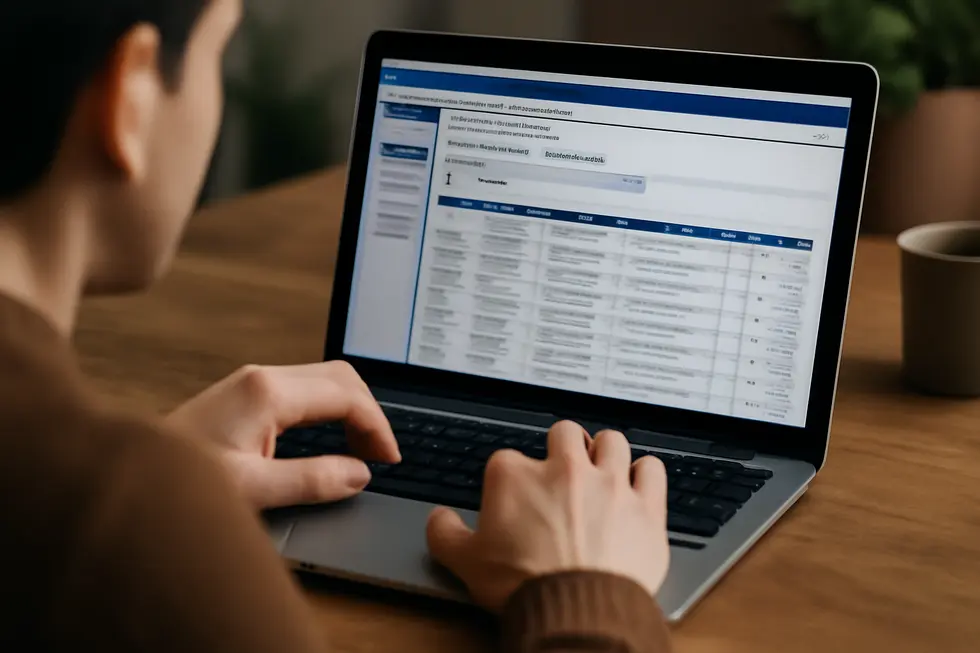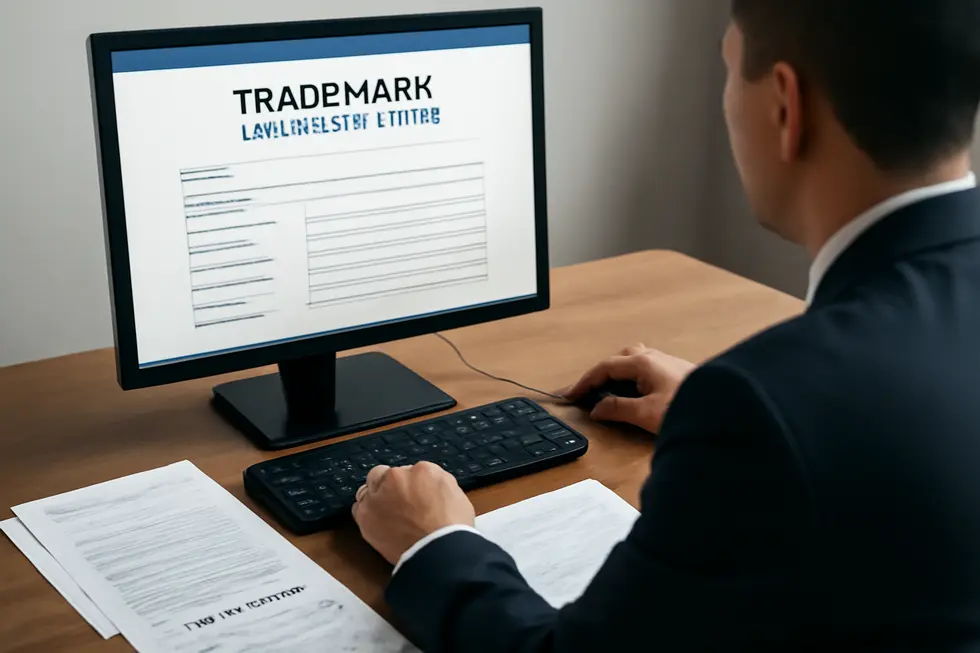Introduction
Protecting your brand’s identity starts with securing exclusive rights to your unique phrases. Trademarking a phrase is a strategic move that guarantees your business stands out in the marketplace and defends against competitors. For business owners, understanding the trademark process not only shields your intellectual property but also enhances your brand value. This guide breaks down the journey into four critical stages: selecting and qualifying your phrase, conducting thorough trademark searches, navigating the USPTO application process, and managing post-application enforcement. Each chapter builds upon the previous, offering a clear roadmap to legally protect your phrase and maintain your competitive edge.
Tables of Contents
Chapter 1: How to trademark a phrase: Choosing and qualifying your phrase
- Crafting Your Phrase: Strategies for Selecting a Distinctive Trademark
- Ensuring Your Phrase Is Distinctive and Eligible for Trademark Protection
- Pinpointing the Right Trademark Class to Secure Your Phrase’s Legal Protection
- Ensuring Your Phrase Is Distinctive: Mastering a Comprehensive Trademark Search
- Ensuring Your Phrase Stands Out: Verifying Eligibility and Distinctiveness for Trademark Success
Chapter 2: How to trademark a phrase: Conducting comprehensive trademark searches
- Mastering Trademark Searches: Navigating Exact Matches and Variant Phrases for Clear Trademark Paths
- Harnessing Advanced AI and Technology for Precise and Efficient Trademark Phrase Searches
- Balancing Costs and Benefits: Economic Factors in Conducting Trademark Phrase Searches
- Mastering the USPTO Application Journey After Your Trademark Search
- Navigating Societal and Geopolitical Dimensions in Trademark Searches
Chapter 3: How to trademark a phrase: Filing and application process at the USPTO
- Choosing and Searching Your Phrase: The Crucial First Step in Trademark Filing
- Navigating USPTO Trademark Filings: Submission Steps and Filing Basis Explained
- Navigating USPTO Examination and Office Actions in Trademarking Your Phrase
- Navigating USPTO Review: Publication, Opposition, and Securing Your Phrase Trademark
- Sustaining and Defending Your Phrase Trademark: Essential Post-Registration Steps
Chapter 4: How to trademark a phrase: Post-application steps and protection enforcement
- Navigating USPTO Office Actions and Monitoring Trademark Application Progress
- Understanding Trademark Publication, Opposition Periods, and Registration Processes
- Enforcing Phrase Trademarks: Continuous Marketplace Vigilance and Smart Monitoring Strategies
- Effective Trademark Protection: Using Cease-and-Desist Letters and Legal Action to Stop Infringement
- Securing Your Trademarked Phrase: Ongoing Enforcement Through Customs, Use Documentation, and Renewals
Chapter 1: How to trademark a phrase: Choosing and qualifying your phrase

1. Crafting Your Phrase: Strategies for Selecting a Distinctive Trademark
Selecting a truly distinctive phrase is the foundation of a successful trademark. The strongest phrases are either fanciful, invented without prior meaning, or arbitrary, common words applied in an unrelated context. These categories give your trademark the highest protection because they clearly identify your brand in commerce. While suggestive phrases—those that hint at qualities of your goods or services—can also qualify, they require more effort to defend and register. Phrases that are merely descriptive or generic rarely gain trademark protection unless they acquire a secondary meaning through extensive use and consumer recognition.
To enhance distinctiveness, consider coining unique terms or altering spellings to stand apart from existing marks. Using creative combinations or integrating stylized elements like logos further strengthens your claim. Before filing an application with the USPTO, conduct a thorough search for identical or confusingly similar marks to avoid conflicts. This step is crucial to prevent refusals or legal disputes.
For phrases especially used in digital or social media contexts, documenting bona fide commercial use with supporting specimens is vital for demonstrating distinctiveness and eligibility. Understanding these strategies enables you to pick a phrase that not only resonates with your brand identity but also meets the legal standards required for trademark registration.
For a deeper look at protecting your phrase, explore trademark protection business name logo.
2. Ensuring Your Phrase Is Distinctive and Eligible for Trademark Protection
Successfully trademarking a phrase hinges on its distinctiveness and its ability to avoid being generic or merely descriptive. A trademark must clearly identify your goods or services and set them apart from competitors. Generic phrases, which straightforwardly name products or services, cannot qualify for protection. Similarly, simply descriptive phrases that directly convey product qualities usually face rejection unless they have gained secondary meaning through extensive consumer recognition and consistent use.
To strengthen eligibility, aim for phrases that are fanciful (coined terms), arbitrary (common words used in unrelated contexts), or suggestive (implying qualities without explicit description). These categories carry inherent distinctiveness, improving chances of registration and robust legal defense. If your phrase leans descriptive, compiling evidence such as marketing campaigns, customer surveys, and long-term usage records can demonstrate acquired distinctiveness.
Before filing, a thorough trademark search using the USPTO’s Trademark Electronic Search System (TESS) is critical. This ensures your phrase does not conflict with existing trademarks, avoiding costly refusals or disputes. Qualifying your phrase this way lays a strong foundation for successful registration and exclusive rights enforcement.
For more insights on trademark protection related to business names and logos, you can explore detailed guidance at trademark2go.com/trademark-protection-business-name-logo/
3. Pinpointing the Right Trademark Class to Secure Your Phrase’s Legal Protection
When trademarking a phrase, selecting the appropriate trademark class is a critical step that directly affects the legal protection your phrase will receive. The United States Patent and Trademark Office (USPTO) categorizes goods and services into 45 distinct classes—34 for goods and 11 for services—and your phrase must be registered in the class relevant to the products or services it represents. To accurately determine this, begin by defining precisely what goods or services your phrase will be associated with. For instance, a phrase promoting apparel belongs in a completely different class than one used for software or cosmetics.
Utilizing tools like the USPTO’s Acceptable Identification of Goods and Services Manual or trademark class finder resources can simplify matching your phrase with the correct class. In cases where your phrase spans multiple product lines or service types, filing in more than one class may be necessary to ensure comprehensive coverage. Observing competitor classifications can also reveal strategic insights into which classes offer better protection or less congestion.
Selecting the right trademark class not only clarifies the scope of your trademark rights but also streamlines the registration process and reduces risks of conflicts. Since filing fees are calculated per class, accurate classification can control your costs without sacrificing protection. For guidance in navigating these classifications, resources like the USPTO’s classification system and trusted trademark class finder tools may be invaluable. For an expanded discussion on similar topics, see trademark protection for business names and logos.
4. Ensuring Your Phrase Is Distinctive: Mastering a Comprehensive Trademark Search
Conducting a comprehensive trademark search is essential to confirm your phrase’s uniqueness and trademark eligibility. This search begins with consulting the USPTO’s Trademark Electronic Search System (TESS), where you look for exact matches by entering your phrase in quotes. Beyond exact matches, examine variant spellings, plural forms, abbreviations, and phonetic similarities, since marks that appear or sound alike may pose conflicts. Using wildcard and truncation symbols in TESS expands your search to catch close variations that might otherwise go unnoticed. It is also prudent to consider foreign language equivalents or common substitutions, such as numerals replacing words, which could trigger registration issues. Importantly, analyze the results within the context of your chosen goods or service class to identify potential clashes relevant to your business area. If a confusingly similar mark exists in the same class or related fields, your phrase may face rejection or opposition. However, a clear search outcome allows you to proceed confidently with your application. Legal guidance can help interpret complex results and refine your search strategy, reducing risks during filing. This thorough approach safeguards your phrase’s distinctiveness, a vital step before formal trademark registration. For more insights on trademark protection essentials, consider exploring resources like trademark2go.com/trademark-protection-business-name-logo.
5. Ensuring Your Phrase Stands Out: Verifying Eligibility and Distinctiveness for Trademark Success
Successfully trademarking a phrase begins with confirming its eligibility and distinctiveness. This requires verifying that your phrase functions effectively as a trademark by uniquely identifying your goods or services and distinguishing them from competitors. Phrases that are generic or merely descriptive generally cannot be registered unless they have established secondary meaning through extensive use. To confirm a phrase’s uniqueness, conducting a comprehensive search via the USPTO’s Trademark Electronic Search System (TESS) is essential. This search should cover exact matches, phonetic similarities, and variations to spot potential conflicts with existing registered trademarks or common law uses. Additionally, it’s vital to determine that the phrase is not confusingly similar to marks used for related goods or services, which could lead to refusal or legal challenges. Selecting the appropriate trademark class that reflects your commercial use ensures proper protection. Preparing accurate documentation and being ready to respond to any USPTO inquiries further supports registration success. Consulting professional trademark resources or legal experts can refine this process and help safeguard your brand identity. For deeper insights into trademark rights and use, explore guidance on common law trademark rights.
Chapter 2: How to trademark a phrase: Conducting comprehensive trademark searches

1. Mastering Trademark Searches: Navigating Exact Matches and Variant Phrases for Clear Trademark Paths
Conducting thorough trademark searches is a critical step to secure your phrase’s unique identity. Start by using the USPTO’s Trademark Electronic Search System (TESS) to perform an exact phrase search. This uncovers existing identical or nearly identical marks, helping avoid straightforward conflicts. However, trademark confusion often arises from subtle variations. To address this, extend your search to cover common variants such as plural vs. singular forms, alternate spellings, phonetic equivalents, and frequent misspellings. Because TESS searches exact terms, these variant checks must be done manually or by modifying search queries to cover all possibilities. Beyond direct variations, exploring synonyms and related terms broadens the search scope to identify potentially conflicting phrases that could cause marketplace confusion. If your phrase is part of a stylized logo, consult the USPTO Trademark Design Search Manual to examine similar designs. Given these complexities, engaging professional search services or trademark attorneys can provide expertise that minimizes oversights and sharpens your application strategy. Comprehensive searches decrease the chance of costly refusals or legal disputes, laying a firm foundation for successful registration with the USPTO. For practical guidance on trademark search procedures and filing, reviewing resources like common law trademark rights can be invaluable.
2. Harnessing Advanced AI and Technology for Precise and Efficient Trademark Phrase Searches
Conducting an exhaustive trademark search is critical to ensure your phrase does not infringe on existing marks. Today, leveraging advanced AI and cutting-edge technological tools enhances this process by quickly analyzing exact phrases alongside phonetic and visual variations. These tools cross-reference multiple trademark databases, including those of the USPTO, to uncover potential conflicts that traditional manual searches might overlook. Preparing for the search entails gathering your phrase’s exact wording, variants, and any stylized elements for thorough input.
After processing, AI-generated results should be carefully validated through legal expertise to confirm no conflicting marks exist. Upon confirming availability, filing your trademark application online involves providing detailed descriptions of your phrase’s use in commerce and paying the applicable fees. Post-filing, the trademark office examines your submission, then publishes it to allow third-party opposition.
Moreover, continuous monitoring using AI tools after registration guards against new infringers and protects your rights over time. While technology accelerates accuracy and efficiency, consulting qualified trademark counsel remains indispensable to navigate complexities, respond to official actions, and secure your phrase’s exclusive commercial use. For deeper insights on trademark protections, consider reviewing the comprehensive guidance available on trademark-protection-business-name-logo resources.
3. Balancing Costs and Benefits: Economic Factors in Conducting Trademark Phrase Searches
Conducting a thorough trademark search is an essential step when aiming to trademark a phrase, but it also involves important economic considerations. While basic searches using the USPTO’s Trademark Electronic Search System (TESS) are free, these searches only cover federally registered marks and may miss unregistered common law trademarks or international uses. Engaging a professional or trademark attorney to conduct wider searches often costs several hundred to over a thousand dollars, reflecting the depth and expertise involved. Filing fees themselves, recently increased to $350 per class of goods or services, add to the expense and can multiply if your phrase covers multiple categories.
Beyond initial search and filing costs, potential additional expenses may arise if legal objections or oppositions occur later. Responding to office actions or defending your application can require further attorney support, increasing total costs. Despite expenses, investing in comprehensive searches and expert guidance early can prevent costly rebranding or infringement disputes down the line. For businesses planning to expand internationally, understanding and budgeting for trademark protection costs across jurisdictions is also vital.
Planning your trademark search budget thoughtfully ensures a strategic and cost-effective approach. For more insight on trademark basics and protecting your brand, consider exploring trademark protections for business names and logos.
4. Mastering the USPTO Application Journey After Your Trademark Search
Once you complete a thorough trademark search using the USPTO’s TESS system, the next crucial step is navigating the USPTO application process with care and precision. Begin by preparing your application details, clearly defining your phrase and specifying the goods or services class it applies to. Decide if you want to register your phrase as a standard character mark, protecting the text itself, or as a special form mark, which also covers stylized designs or logos. Using the USPTO’s Trademark Electronic Application System (TEAS), you can file your application online, ensuring all fields are accurately completed to avoid delays. Filing fees, typically ranging from $250 to $350 per class, are non-refundable and must be submitted during this step. After submission, monitoring your application status is essential; the USPTO may issue Office Actions requesting additional information or clarification. Prompt, precise responses to these communications increase your chances of approval. Applying early, ideally before commercial use, provides stronger rights and minimizes conflicts with others. Throughout the process, leveraging official USPTO resources and manuals can guide you effectively and reduce errors. For those seeking additional support, consulting specialized trademark guidance is advisable to safeguard your phrase and ensure a smooth path toward registration.
5. Navigating Societal and Geopolitical Dimensions in Trademark Searches
When conducting a comprehensive trademark search for a phrase, understanding the broader societal and geopolitical landscape is crucial. Trademark laws differ significantly across countries, so effective searches must extend beyond domestic databases to consider international jurisdictions. Geopolitical factors like trade agreements, political relations, and data sovereignty laws influence how trademarks are registered and enforced globally, often dictating where and how to file to secure protection.
Equally important are societal aspects such as cultural nuances, language variations, and local naming customs. A phrase that is unique and non-infringing in one region may carry unintended meanings or conflicting trademarks elsewhere, especially when translated or adapted. Including these linguistic and cultural variants in your search scope helps mitigate risks of misunderstanding or legal challenges.
Moreover, businesses engaged in cross-border collaborations should clarify ownership rights early, as co-developed phrases can complicate trademark claims across different legal regimes. Expanding trademark searches to reflect these geopolitical and societal realities ensures more robust protection and aligns legal strategy with market diversity. For detailed guidance on trademark protections relevant to business names and logos, consider exploring resources that offer step-by-step insights into these processes.
Chapter 3: How to trademark a phrase: Filing and application process at the USPTO

1. Choosing and Searching Your Phrase: The Crucial First Step in Trademark Filing
Successfully trademarking a phrase begins with selecting a distinctive phrase closely tied to your goods or services. This distinctiveness is vital to establish your brand’s identity and eligibility for protection. Once you identify a phrase, conducting a comprehensive search using the USPTO’s Trademark Electronic Search System (TESS) is essential to ensure it isn’t already registered or confusingly similar to existing trademarks. Expanding your search to include variant spellings, abbreviations, and related product or service categories helps avoid costly conflicts or refusals.
After confirming availability, prepare your trademark application carefully, specifying the phrase, associated goods or services, and the desired trademark format—either standard character or special form. Filing online requires payment of non-refundable fees, generally ranging from $250 to $350 per class. Early application, ideally before commercial use, strengthens your rights and reduces infringement risks.
Following submission, timely responses to USPTO inquiries during examination ensure efficient processing. For detailed guidance through search and application, consider professional legal assistance and utilize resources like the USPTO’s application portal. For further insight into trademark protection and application strategies, explore comprehensive discussions at trademark2go.com/trademark-protection-business-name-logo.
2. Navigating USPTO Trademark Filings: Submission Steps and Filing Basis Explained
Trademarking a phrase begins with a crucial step: conducting a thorough search using the USPTO’s Trademark Electronic Search System (TESS) to ensure your phrase is unique and not already registered or pending registration. After confirming availability, you move to the online application through the Trademark Electronic Application System (TEAS). Here, you must select a filing basis that best fits your situation—either “Use in Commerce,” confirming current use of the phrase in business, or “Intent to Use,” which secures your priority before actual commercial use. The application requires precise details including the applicant’s identity, a clear depiction of the phrase, a description of the goods or services it will represent according to the USPTO’s classification manual, and, if applicable, a specimen showing the phrase in commerce. Upon submission, a non-refundable filing fee, generally between $250 and $350 per class, is required. Following submission, the USPTO examines your application, typically over eight months, issuing office actions for any issues. Prompt and thorough responses to these communications are required to advance your application toward publication and eventual registration. Utilizing professional assistance can reduce errors and improve success chances during this process. For detailed procedural guidance, the USPTO’s official website features comprehensive resources on submitting applications and meeting all filing requirements. More insights on trademark protection are available at trademark protection business name logo.
3. Navigating USPTO Examination and Office Actions in Trademarking Your Phrase
After submitting your trademark application for a phrase through the USPTO’s online system, it enters a critical review phase handled by an examining attorney. This professional evaluates your submission for compliance with legal requirements and potential conflicts with existing trademarks. If issues arise—such as concerns over similarity to other marks, descriptiveness, or insufficient information—the USPTO issues an Office Action that outlines reasons for refusal or requests for clarification. Responding promptly and comprehensively to these Office Actions within the designated time frame is essential to prevent your application from being abandoned. Once the examining attorney approves the application, the phrase is published in the Official Gazette for a 30-day opposition period, allowing third parties to challenge the registration if it infringes their rights. For Intent to Use filings, applicants must later submit proof of actual use in commerce before final registration. Upon successful completion, the USPTO grants nationwide exclusive rights to your phrase for the specified goods or services. Understanding this examination process and the importance of timely responses helps avoid delays and secures your trademark effectively. For more detailed strategies on trademark protection, consult trusted guides on trademark protection for business names and logos.
4. Navigating USPTO Review: Publication, Opposition, and Securing Your Phrase Trademark
After filing your trademark application with the USPTO, the journey continues through a critical sequence of examination, publication, opposition, and final registration. Once an examining attorney reviews your application for compliance and potential conflicts, any issues will result in an Office Action that requires a prompt response to avoid abandonment. Upon approval, your phrase enters the USPTO Official Gazette for a 30-day publication period. During this time, third parties may file oppositions if they believe your trademark infringes upon their rights. If no opposition arises or if it is resolved in your favor, the application advances. For applicants filing based on actual use, this leads directly to registration, granting nationwide protection and exclusive rights to your phrase. For those applying on intent-to-use grounds, the USPTO issues a Notice of Allowance, after which you must file a Statement of Use demonstrating commercial usage within six months to finalize registration. Remember, maintaining your trademark requires ongoing diligence, including timely filings and fees between the 5th and 6th year, and every ten years thereafter. This process secures your phrase’s unique identity and legal standing, ensuring your exclusive commerce rights are protected well into the future. For additional insight into trademark protection strategies, the resource on trademark protection for business name or logo provides valuable guidance.
5. Sustaining and Defending Your Phrase Trademark: Essential Post-Registration Steps
After successfully registering your phrase trademark with the USPTO, maintaining and enforcing your rights is paramount to preserving its legal protection. Trademark maintenance requires timely filings: between the 5th and 6th year after registration, you must submit a Section 8 Declaration of Use to demonstrate the mark remains active in commerce. Later, between the 9th and 10th year, a combined Section 8 Declaration and Section 9 Renewal must be filed to extend registration, with renewals due every ten years thereafter. Failure to meet these deadlines results in cancellation of your rights.
Beyond paperwork, proactive monitoring for unauthorized use is critical. Trademark owners bear the responsibility to enforce their rights and prevent infringement by others who might use confusingly similar phrases. Correctly displaying the ® symbol signals your registered status and strengthens your position legally. Navigating these maintenance and enforcement obligations can be complex, so consulting qualified legal assistance can safeguard your investment and streamline compliance. For a detailed understanding of trademark protection and the vital aspects of enforcement, reviewing resources such as trademark protection for business names and logos can offer valuable insights.
Chapter 4: How to trademark a phrase: Post-application steps and protection enforcement

1. Navigating USPTO Office Actions and Monitoring Trademark Application Progress
After filing your trademark application for a phrase with the USPTO, vigilant management of the process is essential to secure your rights. Monitoring your application’s status regularly through the USPTO website allows you to track its progress and stay informed of any updates. Typically, a USPTO examining attorney reviews the application within about a month, but delays or issues can extend this period.
If the examining attorney identifies conflicts, descriptiveness problems, or other concerns, they will issue an office action—an official notice that outlines the specific objections. Responding to this within six months is mandatory, as failure to do so results in application abandonment and loss of trademark rights. Carefully reviewing the office action and preparing a thorough response can overcome refusals.
Complex office actions, such as those involving likelihood of confusion with existing marks, may require professional legal support to ensure compliance with USPTO standards and lessen risks of rejection. Once resolved, your mark will enter the publication phase in the Official Gazette, allowing third parties 30 days to oppose registration. If no opposition occurs, registration proceeds, or you will need to file additional documents like a Statement of Use if filing based on intent to use.
This attentive post-application approach safeguards your trademark investment and expedites the path to protection. For deeper insight into application monitoring and responding to office actions, consult resources such as those available at trademark2go.com/trademark-protection-business-name-logo.
2. Understanding Trademark Publication, Opposition Periods, and Registration Processes
Once your trademark application passes initial examination, it enters a critical phase: publication for opposition. The trademark office publishes your application in an official gazette, publicly signaling your intent to register the phrase and inviting any third parties to raise objections within a typical four-month window. This period allows rights holders concerned about potential conflicts to formally oppose your trademark.
If an opposition arises, both parties engage in a structured legal proceeding involving submission of notices, counterclaims, and supporting evidence. Hearings are held to resolve disputes, and failure to respond or appear can result in adverse rulings. The trademark authority ultimately decides whether to uphold or dismiss the opposition.
When no opposition is filed—or if the opposition is resolved in your favor—the trademark advances toward registration. A registration certificate is then issued, symbolizing exclusive rights to use the phrase commercially in connection with your specified goods or services. This certificate offers nationwide protection and tools to enforce your trademark against unauthorized use.
Throughout this post-application phase, proactive monitoring and timely responses are essential to avoid delays or abandonment. For detailed guidance, consulting specific trademark office procedures, such as those of the USPTO, is advisable. This process ensures that the trademark system maintains clarity and fairness, balancing your rights with the interests of existing trademark holders. For an in-depth understanding of trademark protection strategies, consider exploring trademark protection for business names and logos.
3. Enforcing Phrase Trademarks: Continuous Marketplace Vigilance and Smart Monitoring Strategies
Registering a trademark phrase is only the beginning of protecting your intellectual property. Once your phrase is federally registered, proactive enforcement efforts become essential. Regularly monitoring the marketplace and online platforms helps identify unauthorized or confusingly similar uses. This ongoing vigilance safeguards your exclusive rights and prevents dilution or infringement. Because trademark enforcement is largely the owner’s responsibility, responding swiftly to potential violations through cease-and-desist letters or legal action is crucial.
Leveraging advanced technologies enhances protection by automating the detection of infringements across digital channels. AI-powered tools can scan social media, e-commerce sites, and advertisements in real time to spot suspicious uses and evaluate their context. Blockchain solutions further secure proof of ownership and usage history, creating immutable records beneficial in disputes especially in the digital environment.
By combining thorough initial registration with smart, ongoing monitoring, you maximize the strength of your trademark’s protection. This dynamic approach ensures your phrase maintains its distinct identity and legal safeguards amidst evolving markets and competitors. Learn more about trademark protections and enforcement strategies at trademark2go.com/trademark-protection-business-name-logo/
4. Effective Trademark Protection: Using Cease-and-Desist Letters and Legal Action to Stop Infringement
Once your phrase is officially registered as a trademark with the USPTO, the responsibility for its protection falls squarely on you. The cornerstone of trademark enforcement is vigilant monitoring for unauthorized uses of your phrase in commerce. When infringement is detected, sending a cease-and-desist letter is the first strategic step. This formal notice outlines your ownership rights, specifies how the phrase is being misused, and demands that the infringer halt any unauthorized use immediately. Including clear evidence, such as screenshots or URLs, reinforces your claims and establishes a legal record that may deter further violations.
If the offending party ignores this letter, escalation through legal channels becomes necessary. Filing a trademark infringement lawsuit allows you to seek court orders to stop the infringement, monetary damages, and, in some cases, recover attorney fees. The strength of your case relies heavily on thorough documentation of your registration and all previous enforcement efforts. This process ensures your exclusive rights are upheld nationwide, preventing others from capitalizing on your brand’s identity.
Early and decisive action is crucial in trademark enforcement. For additional insight on protecting your trademarked phrase and related rights, exploring trademark protection for business names and logos can offer valuable strategies.
5. Securing Your Trademarked Phrase: Ongoing Enforcement Through Customs, Use Documentation, and Renewals
Once your phrase is successfully registered as a trademark, maintaining robust protection requires proactive enforcement and careful administrative upkeep. A critical measure is customs recording, which empowers authorities to intercept imported counterfeit goods bearing your trademarked phrase, thereby safeguarding your brand’s integrity at borders. Alongside this, continuously demonstrating actual use of your trademark in commerce is essential to preserve legal rights. Meticulously document your phrase’s presence in marketing, packaging, and sales, as failure to show consistent use—typically over a three- to five-year period—can lead to cancellation. Vigilant market monitoring further strengthens enforcement; watch for infringing activities and act decisively through oppositions, cease-and-desist letters, or litigation to stop unauthorized exploitation. Equally important are timely renewals, usually every ten years, which require submitting proof of ongoing use and paying fees to maintain trademark validity. In some jurisdictions, recording trademark licenses and ensuring quality control over licensed products is necessary to prevent dilution. Engaging knowledgeable legal professionals can streamline these complex responsibilities. For comprehensive guidance on protecting your trademarked phrase beyond registration, reviewing resources like the insights on trademark protection for business names and logos can be highly beneficial.
Final thoughts
Trademarking a phrase is a vital step for business owners seeking to protect their brand identity and establish legal rights in a competitive marketplace. By carefully choosing a distinctive phrase, performing comprehensive searches to avoid conflicts, and correctly navigating the USPTO’s rigorous application process, you lay the foundation for strong intellectual property protection. Furthermore, managing post-application requirements and actively enforcing your trademark safeguards your exclusive rights and helps deter infringement. This structured approach empowers business owners to confidently secure their phrases, build lasting brand equity, and maintain control over their commercial presence.
Your IP is the foundation of your success – let’s protect it together before it’s too late. We can’t wait to help you turn your ideas into legally secured assets.
About us
undefined


